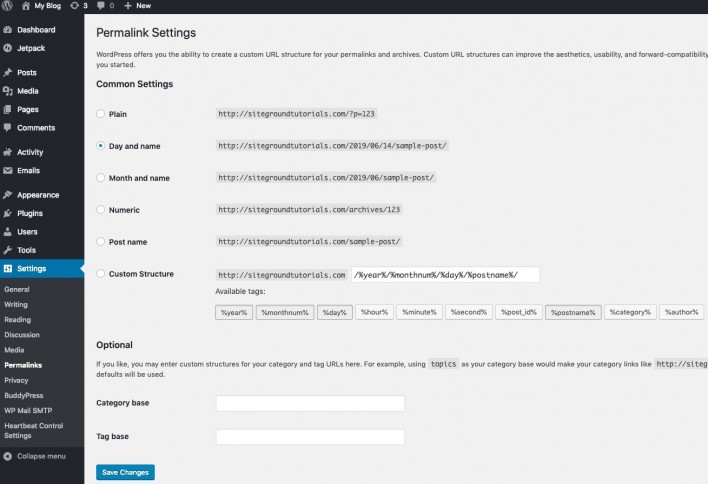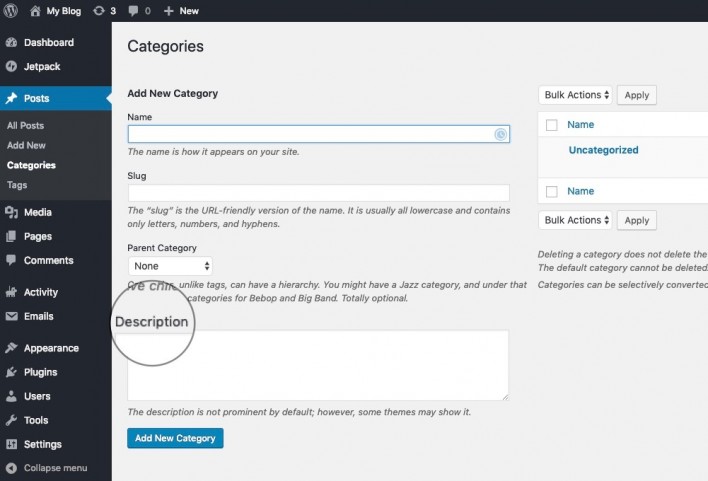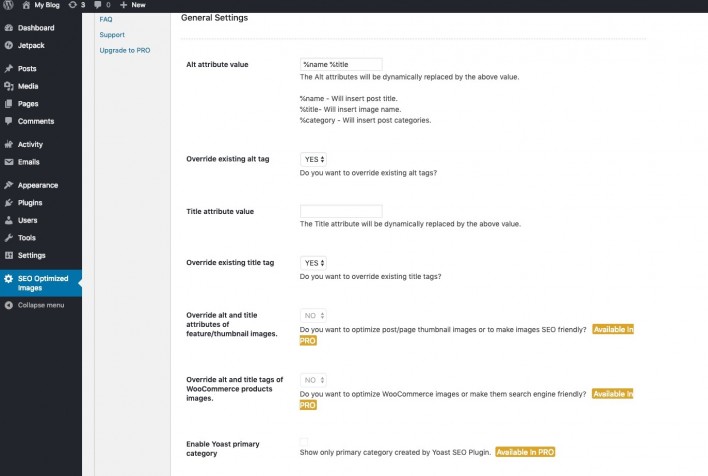WordPress SEO Tutorial
How to use Permalinks to optimize your WordPress website
WordPress gives you the freedom to set your links the way you want them to look like. In the administrative area of WordPress go to Settings > Permalinks. On this page, choose from several predefined options or use a custom structure for your links.

You can choose the Custom Structure option and enter /%postname%/ for example. This will make your links look like http://yourdomain.com/the-name-of-your-post/. Or you can enter /%category%/%postname%/ if you want to include the name of your category in the URL. You can also add custom text or other WordPress variables. The full list of available variables that you can use in your permalinks can be found at the WordPress official website.
How to optimize your meta descriptions
You should enter a meta description for each one of your pages. Use simple but informative sentences. The search engines will check how relevant your description is to the actual content of your page so make sure that you describe only the current page and avoid adding irrelevant information in the description.
It is a good practice to categorize your posts in articles. Once you go to the Posts > Categories page in your admin area, note the description field available for each category. WordPress will take what you enter in this field and insert it as meta description for the category.

How to optimize your images
It is essential to have the “title” and “alt” tags specified for each one of the images you use in your posts. The search engines will then know what this image is supposed to represent. Providing a title and alt tags for each image you use, however, can be a time-consuming task. Instead, you can use the handy SEO Optimized Images plugin. For more information on how to install this plugin, check our tutorial on How to install WordPress plugins.
Once you install the plugin, go to your WP-Admin Dashboard > SEO Optimized Images. On this page, you can specify the ALT and TITLE tags for your images. The plugin gives you the option to use internal variables such as %title, %name, and %category. With them, you can set the ALT and TITLE tags of your images to the title of your post for example. The plugin does the rest. This saves you a lot of time and keeps your images SEO friendly.

How to use Headings to optimize your WordPress blog
You should use the <h1> tag only for the titles of your posts.
You should use a few <h2> tags and as many <h3> tags as you need for the other headings in your posts. Doing this will allow the search engines to index the important information from your website better. A good document has headings and subheadings because headings make it easier to determine the subject of the page. For blog websites, the best SEO practice is to set the title of your post in a heading1 tag.